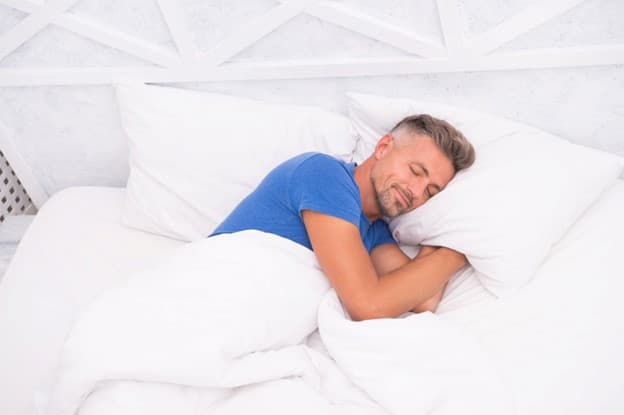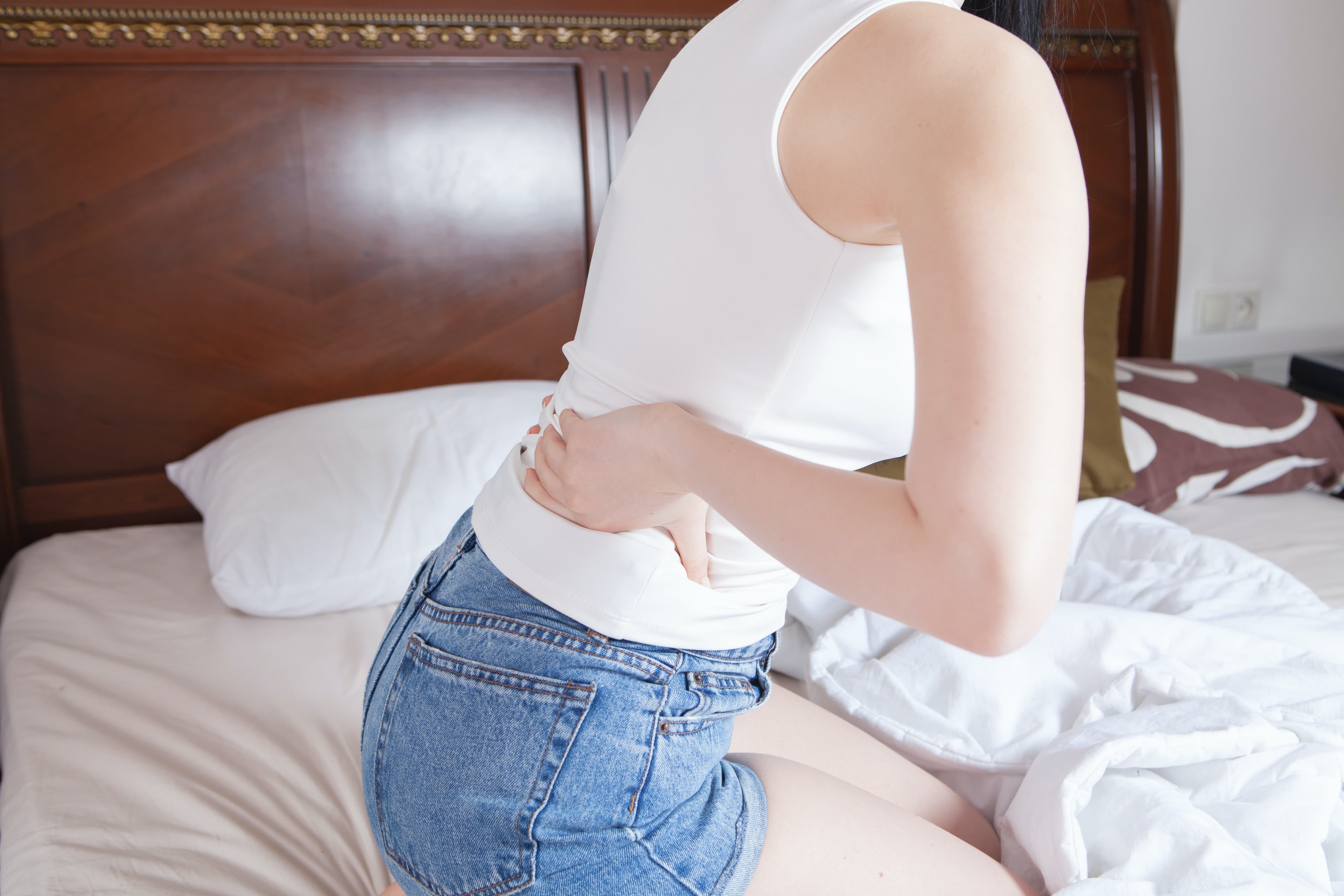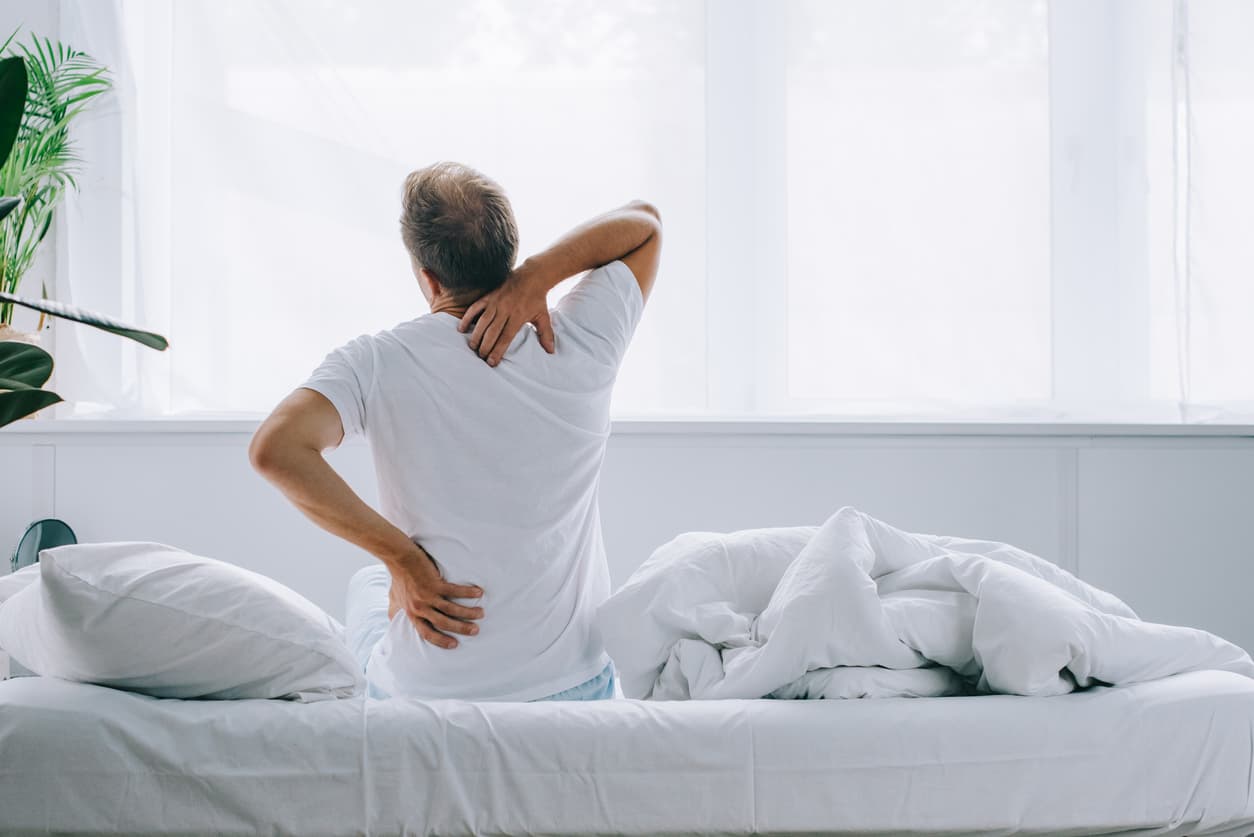Anyone who has sciatica or lives with someone who suffers from it knows that it's a nightmare. Life is already hard enough, and then sciatica comes out of nowhere. Enjoying pregnancy? Sciatica. Working 9 to 5? Sciatica. It’s a fairly common back condition that can occur in people of all ages at any time, and sleeping with sciatica is the worst.
Sciatica sufferers may be up all hours of the night, tossing and turning, dealing with pain flairs. While sciatica doesn’t have a cure (huge bummer), there are steps you can take to manage the pain, especially during the night.
What is sciatica pain?
Sciatica pain isn't your everyday backache. Sciatic pain is caused by impingement of the sciatic nerve—the largest nerve in the body. This is why the pain radiates from the lower back down through the buttocks and the legs.
Arthritis, an injury, narrowing of the spinal canal (stenosis), a bulging or partially herniated disc, and piriformis syndrome , which can mimic sciatica symptoms, can cause sciatica nerve pain.
Sciatica is a common syndrome. In fact, around 40% of American adults are diagnosed with it at one time or another. And many people start experiencing some spinal issues in their thirties. Certain activities can aggravate sciatica, including sitting at a desk all day. Cycling and running can also lead to sciatica if the hamstrings and the piriformis muscle aren't properly stretched.
Sometimes, along with the pain, sciatica can also cause numbness, tingling, or burning sensation in the affected leg. Coughing, twisting, or bending may aggravate the pain. So can lifting heavy items.
Common treatments for sciatica pain
Analgesics, ice packs, heating pads, deep tissue massage, and spinal manipulation can help reduce or temporarily relieve sciatic pain. While sciatica usually isn't chronic, it can recur again, especially if it's caused by a bulging disc in the spine. A typical case of sciatica will resolve in between four to six weeks, but until it resolves, sciatica pain can be nearly disabling.
Certain yoga poses can help with sciatica pain, especially the reclining pigeon pose, which helps open your hips and releases your piriformis muscle. Be cautious, though, and work with your physical therapist on other stretches and exercises that are effective for sciatica.
And don’t forget about the importance of a pressure-relieving yet supportive mattress, which is especially essential if you suffer from sciatica pain.
What type of mattress is best for sciatica?
The best mattress for sciatica depends on several factors, such as your sleeping position, your need for pressure relief, and your budget.
Many people find that a memory foam or a hybrid mattress provides the right level of pressure relief and support. NASA scientists created memory foam to cushion its test pilots during space flights. Today, memory foam is used in everything from football helmets to shoes. But the durable, aerated foam used in modern premium mattresses takes NASA engineering to a whole new level. It’s out of this world (pun intended).
A foam mattress provides extra pressure relief and support—without making you feel like you’re sleeping on a rock. For sciatica sufferers, this means better spinal alignment and less pain. And when flare-ups do happen and you need to adjust, foam mattresses have very little motion transfer. So your sleeping partner (or pets) won’t be disturbed.
Plus, staying relaxed is a huge part of treating chronic pain. Foam mattresses mold to your body and have excellent temperature regulation, meaning you can snooze on a supportive, cooling cloud.
Sciatica sufferers may also respond well to hybrid mattresses, which are an innovative blend of high-performance foam and springs. These mattresses have more bounce to them and fantastic edge support, which, depending on your personal preferences, might be even more comfortable than foam alone.
Truly, the best type of mattress for sciatica is (a) supportive, (b) pressure-relieving, and (c) aligned with your personal sleep preferences. Your comfort is king when it comes to sciatica treatment.
If you prefer an all-foam mattress, give the Leesa Original a try—it delivers exceptional sleep quality for the chronically unrestful. If a hybrid is more your style, Leesa’s Sapira Hybrid mattress features layers of supportive, premium foam and 1,000+ individually wrapped pocket springs.
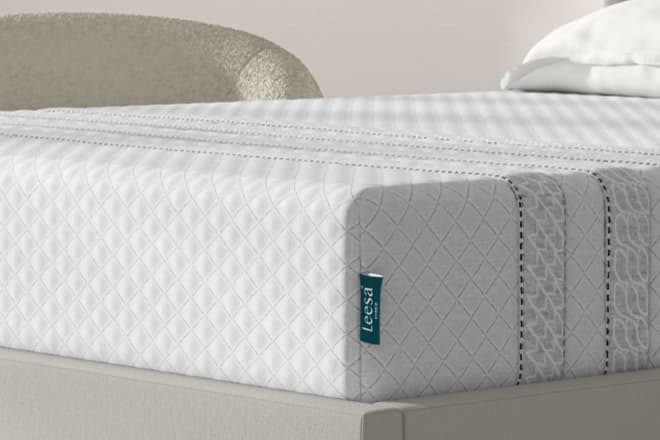
Best mattress firmness for sciatica
Soft mattresses are a big no-no for sciatica sufferers. Studies suggest that medium-firm mattresses offer the right amount of support for back pain sufferers. A supportive mattress helps maintain proper spinal alignment while you sleep, which provides needed pressure relief.
But in some situations, a softer mattress firmness is preferred. For example, extremely lightweight people—think your 92-pound grandma—may need a softer mattress for proper pressure point relief. They simply don’t put enough pressure on the mattress for it to conform to their bodies correctly. Likewise, bigger bodies might need more support or a mattress specifically designed for plus sizes, like the Leesa Plus Hybrid.
However, for most sciatica sufferers, a medium-firm mattress is generally best. Leesa's Original Hybrid mattress is a great medium-firm option made with premium multi-layer foam and 789+ individually wrapped responsive springs.
Can a bad mattress cause sciatica?
While a bad mattress can't cause sciatica, it can definitely make it worse. If you're waking up with more aches and pain, or you've had your mattress for over 8–10 years? It’s probably time to replace your mattress.
It's especially important for back sleepers suffering from sciatica to find the right mattress that relieves pressure points and maintains proper spinal alignment. Sleepers who favor various sleeping positions experience pain relief on foam and hybrid mattresses.
Best sleep positions for sciatica: Back or side
Some people have a preferred sleeping position and some switch positions during sleep. But the truth is that some sleeping positions are better for people with sciatica than others. It’s absolutely vital to sleep in positions that evenly distribute your body weight and keep your spine aligned. That said, the two best sleep positions for sciatica pain relief are side and back.
Many sleep experts recommend sleeping on your side to prevent swelling and allow for optimal blood circulation through your inferior vena cava. This is your largest vein responsible for carrying oxygen-depleted blood back to your heart. Meanwhile, sleeping on your back helps distribute your weight evenly and reduce pressure on your back.
One big tip for back sleepers: You may find some relief by tucking a pillow under your knees. Doing so helps your hip flexors relax and takes the pressure off of your lower back. For a side sleeper with sciatica, placing a pillow between your knees can help make you more comfortable. Consider using a memory foam pillow, or augment your sleep with a body pillow.
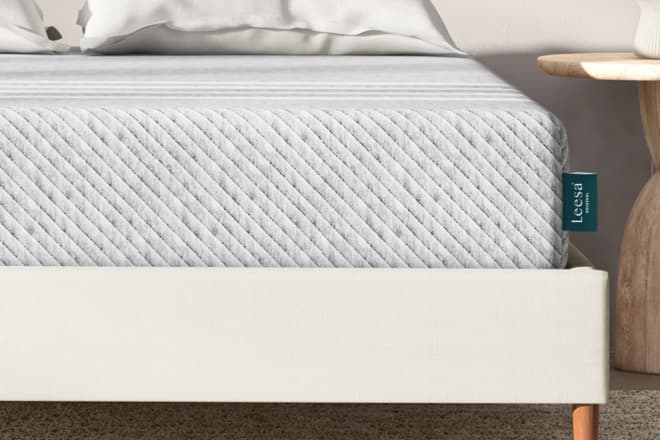
Worst sleep position for sciatica: Stomach
Of all the sleeping positions, stomach sleeping is often the worst for sciatica—and back or neck pain in general. Stomach sleeping compresses the lower back and exacerbates nerve pain .
Some people have no problems training themselves to sleep on their back. For others, climbing Mount Everest is easier than sleeping in a different position. If you can only sleep on your stomach, try these tips to reduce sciatica pain:
- Use a stomach pillow: Place a pillow under your pelvis and lower belly to help maintain the arch of the back.
- Get a foam mattress: A high-quality foam mattress will help apply the right pressure that keeps your back aligned.
- Use a special head pillow: Sleeping on your stomach can also cause neck pain, especially with a stomach pillow. Using a flat or an adjustable pillow can help realign your neck when you're stomach sleeping.
For pregnant sciatica sufferers, stomach sleeping becomes completely impossible in the third trimester, when your growing miracle might start feeling like a growing pain in the butt. There’s good news, though! A foam mattress and a pregnancy body pillow can help you adjust to this change and sleep on your side in comfort.
Get your mattress for sciatica pain delivered
There may not be a cure for sciatica, but there are plenty of treatments and products that can ease symptoms. From getting a new mattress to adjusting your sleeping position, you can take back your life from the grips of sciatica pain and get nightly relief.
Sciatica is no joke, and here at Leesa, we take your sleep seriously. Whether you're shopping for the best memory foam mattress or a hybrid mattress that delivers the support of innerspring and the heavenly pressure relief of memory foam? You'll find the best mattress for back pain by shopping with Leesa.
Take the mattress quiz to discover exceptional pressure relief and quality sleep.
FAQs
What kind of mattress is best for sciatica pain?
A foam or hybrid mattress will offer the best sleep for sciatica sufferers. These mattresses must be made with layers of durable, supportive foam and hundreds of pocket springs.
What is the best sleep support for sciatica?
For the vast majority of people, the best sleep support for sciatica is medium-firm mattresses. But it all comes down to what works best for your body. Super lightweight people may need a softer mattress, while bigger bodies might need a firmer one.
Is a spring mattress good for sciatica?
A traditional innerspring spring mattress doesn’t offer the adaptive support and pressure relief needed to treat sciatica. A hybrid mattress provides a blend of foam and spring support that cushions and supports the spine.
What type of mattress to avoid for back pain?
If you or your partner have sciatica, avoid using an old mattress that’s no longer supportive. Or an extra soft or extra firm mattress, or a traditional innerspring mattress.
